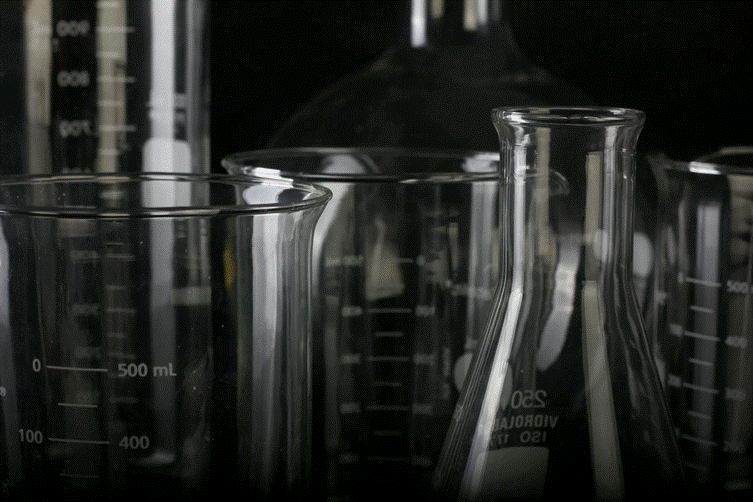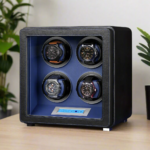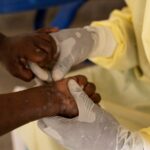Chemistry is an exciting field that unlocks the secrets of the world around us, from the air we breathe to the food we eat. If you’re stepping into a lab for the first time – whether as a student, a hobbyist, or just someone curious about science – knowing your tools is the foundation of success. Among these tools, glassware stands out as a lab essential. These items come in all sorts of shapes and sizes, each designed for a specific purpose.
In this guide, we’ll explore the types of chemistry glassware, break down their names and uses, and share tips on safety and sourcing them. Let’s get started on this journey through the lab!
Common Types of Glassware in Laboratory
In a chemistry lab, you’ll find shelves lined with various glass instruments essential for experiments. These are the types of glassware used in laboratory environments that enable scientific experimentation. Most are made from borosilicate glass, a durable material that resists heat and harsh chemicals. This special glass ensures they can withstand high temperatures and chemical exposure without breaking. Here’s a rundown of the most common types of glassware you’ll encounter:
- Beakers. Wide and open with a convenient pouring spout, beakers are versatile tools used for multiple purposes in the lab. They’re ideal for mixing liquids, heating solutions, or temporarily storing materials.
- Flasks. These come in varieties like round-bottom or Erlenmeyer flasks. Their shapes make them ideal for boiling liquids, running reactions, or storing solutions.
- Test Tubes. Small, slender, and simple, test tubes are great for holding tiny samples or doing quick reaction tests.
- Graduated Cylinders. Tall and narrow with measurement markings, these are your go-to for measuring liquid volumes accurately.
- Pipettes. Thin and precise, pipettes let you move small amounts of liquid – sometimes just a drop or two – with control.
Each piece has specific advantages for different applications. Beakers are suitable for approximate measurements, while graduated cylinders provide greater precision. Understanding these types of glassware in the laboratory helps you pick the right tool for the job, making lab time more efficient and enjoyable.
Chemistry Lab Glassware Names and Uses
Every piece of glassware has a unique name tied to its purpose, and learning them can boost your confidence in the lab. Here’s a detailed list of some key items and what they do:
- Beaker. A versatile container used for mixing, stirring, or heating. It’s not the best for exact measurements, but it’s a lab staple.
- Erlenmeyer Flask. With its cone shape and narrow neck, this flask is great for swirling liquids without splashing. It’s a favorite for titrations and reactions.
- Volumetric Flask. Designed for precision, this flask has a single marking to show an exact volume – ideal for preparing solutions with specific concentrations.
- Burette. This glassware used in the laboratory is a long, graduated tube with a stopcock at the bottom, perfect for adding controlled amounts of liquid during experiments like titrations.
- Funnel. Simple but essential, funnels help pour liquids into small-necked containers without spills.
- Petri Dish. A shallow, round dish used for growing bacteria, observing samples, or holding small objects.
- Condenser. Found in setups like distillation, it cools vapors back into liquid form, capturing them efficiently.
These lab glassware names might seem like a lot to remember, but they’re just tools with practical purposes. For instance, if you need to measure 100 mL of water exactly, grab a volumetric flask. Understanding the function of each piece allows you to work more efficiently and accurately.
Glassware Used in Laboratory Experiments
So, how does glassware used in laboratory experiments actually come into play? Every lab task – whether it’s mixing chemicals, measuring liquids, or separating substances – relies on the right glassware. Let’s break down how these tools shine in common experiments:
- Heating Liquids. Beakers and flasks are essential for this purpose. A round-bottom flask, with its even heat distribution, is ideal for boiling, while a beaker is suitable for general heating tasks.
- Measuring Volumes. Precision matters, and that’s where graduated cylinders and pipettes step in. A pipette can deliver tiny, exact drops, while a cylinder measures larger volumes with clear markings.
- Running Reactions. Test tubes as laboratory glassware are ideal for small-scale tests – like seeing if two chemicals fizz or change color when mixed.
- Titration. This precise process uses a burette to drip liquid into an Erlenmeyer flask, helping you figure out concentrations or reaction points.
- Distillation. A setup with a flask and condenser separates liquids by boiling point – think purifying water or extracting essential oils.
The effectiveness of these types of glassware comes from how they function together in experimental setups. In a distillation process, a mixture is heated in a flask, creating vapor that rises to a condenser where it cools back into liquid form for collection. Each piece plays its part, and choosing wisely ensures your experiment runs smoothly.
Laboratory Glass Supplies Safety 101
Working with laboratory glass supplies is exciting, but safety comes first. Glass can break, chemicals can splash, and heat can surprise you. To ensure safety and prevent injuries, follow these essential guidelines:
- Inspect Before Use. Always check glassware for cracks, chips, or weak spots. Damaged items can shatter when heated or stressed.
- Handle Hot Glass Carefully. Use tongs or heat-resistant gloves. Glass may appear to be at room temperature but can cause serious burns after heating.
- Clean Thoroughly. Wash with soap and water, then rinse well. Leftover residue might react unexpectedly in your next experiment.
- Match Tool to Task. Don’t misuse glassware – like using a beaker for super-precise measurements. Stick to its intended purpose for safety and accuracy.
- Gear Up. Wear safety goggles, a lab coat, and closed-toe shoes. If glass breaks or liquid spills, you’ll be protected.
Safety requires vigilance and proper procedures. For example, never seal a flask tight when heating it – pressure buildup could make it explode. Treating laboratory glassware with care keeps the lab a safe space for exploration.
Where to Buy Laboratory Glassware
Ready to stock up on laboratory glassware? Whether you’re building a home lab, replacing a cracked beaker, or outfitting a classroom, identifying reliable suppliers is essential. Here’s where to look:
- Online Retailers. Platforms like bostonmedsupply.com offer a variety, from basic beakers to specialized condensers. They cater specifically to science needs, often with customer reviews to help you choose.
- Science Supply Companies. Big names like Fisher Scientific, VWR, or Sigma-Aldrich provide top-quality laboratory glass supplies. They’re trusted by pros and often have bulk options for schools or labs.
- Local Sources. Check with nearby universities, community colleges, or lab equipment dealers. They might sell surplus stock at lower prices.
- Second-Hand Markets. Look on Craigslist, eBay auctions, or lab liquidation sales for deals. Be sure to thoroughly inspect used items for damage before purchasing.
When shopping, consider your needs. A beginner might grab a starter kit with beakers, flasks, and test tubes for under $50. More advanced users might invest in a $60 condenser or a $20 volumetric flask for precision work. Choose borosilicate glass – it’s more durable and has greater longevity, even if the initial cost is higher. Compare prices and shipping, and soon you’ll have the tools to experiment like a pro.
Mastering types of chemistry glassware opens the door to the wonders of lab science. From the versatile beaker to the precise burette, each piece has a purpose that makes experiments possible. By exploring the types of glassware in laboratory settings, learning their chemistry lab glassware names and uses, and seeing how glassware used in laboratory tasks works, you’re ready to tackle any project. Add in smart safety habits with laboratory glass supplies and a plan to source quality laboratory glassware, and you’re set.
These tools are essential instruments for scientific discovery and experimentation. Whether you’re heating, measuring, or mixing, they make science come alive. Start with the basics, get comfortable with their roles, and soon you’ll be navigating the lab with ease. Each piece of glassware serves a vital function in the laboratory, from the versatile beaker to the precise pipette.














